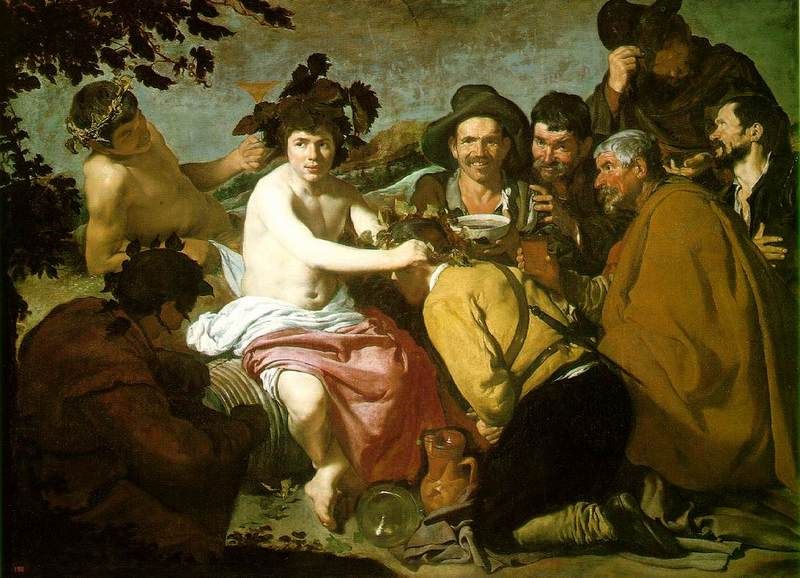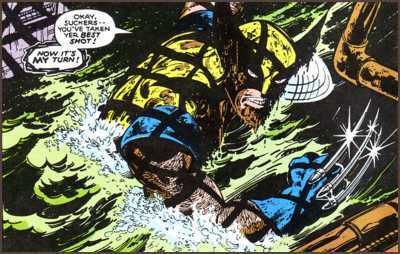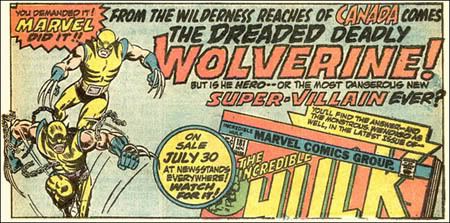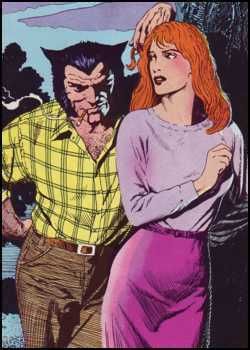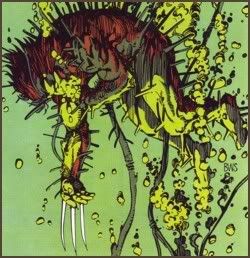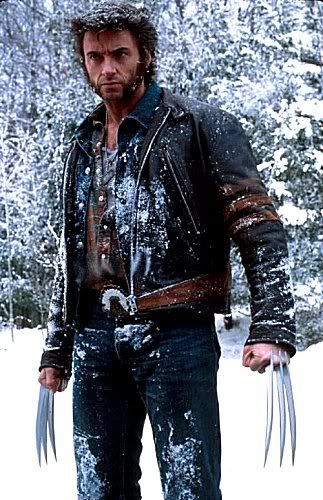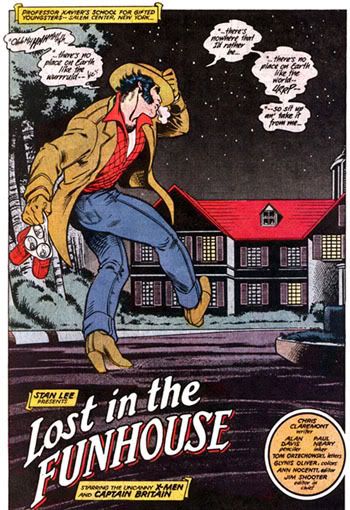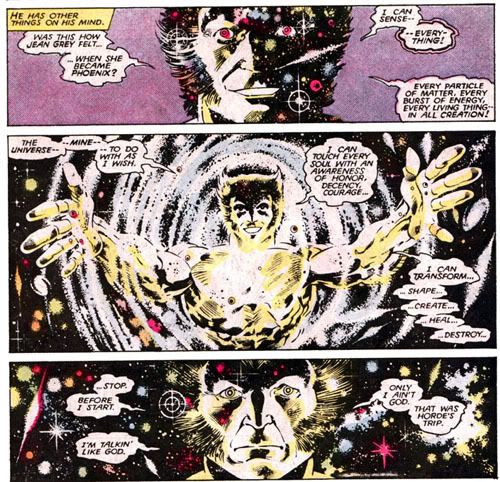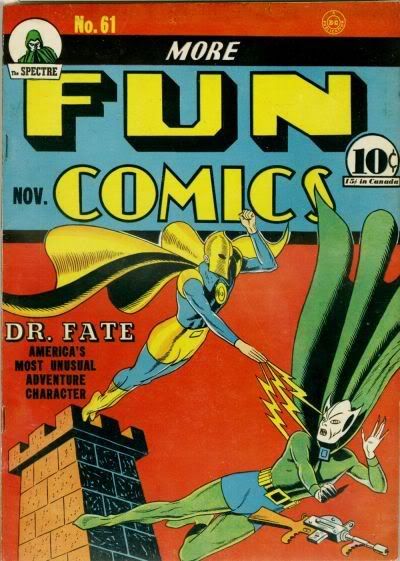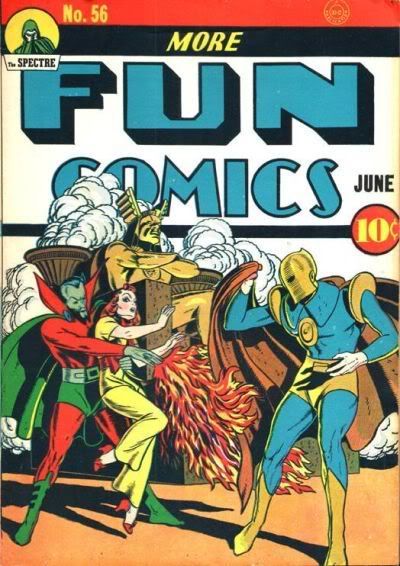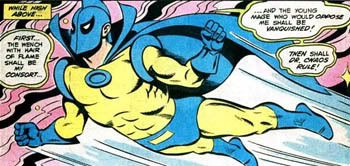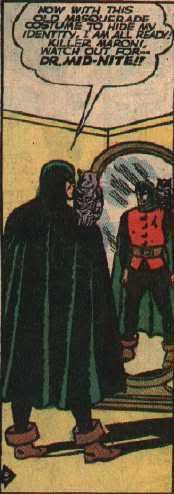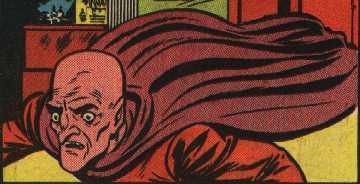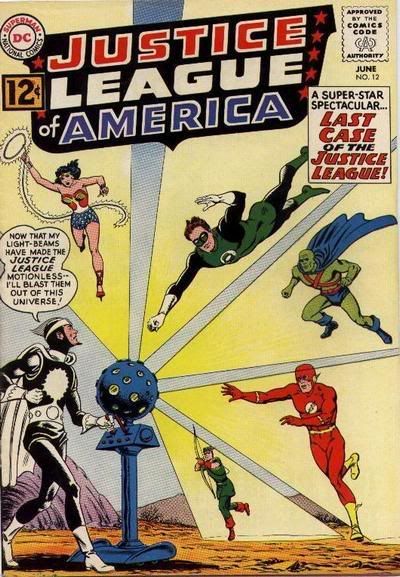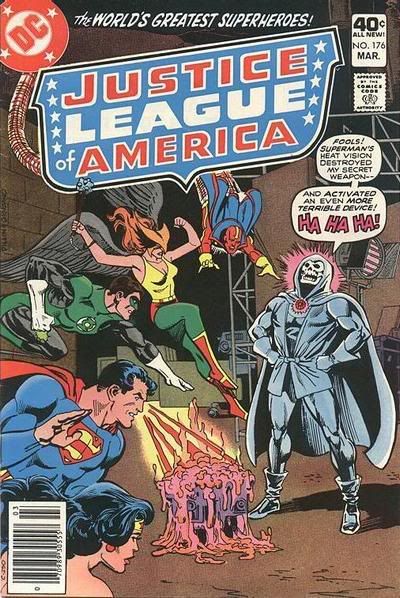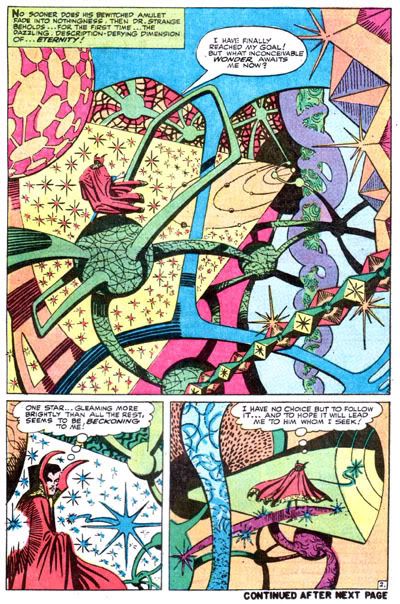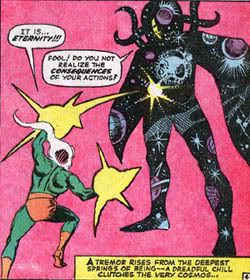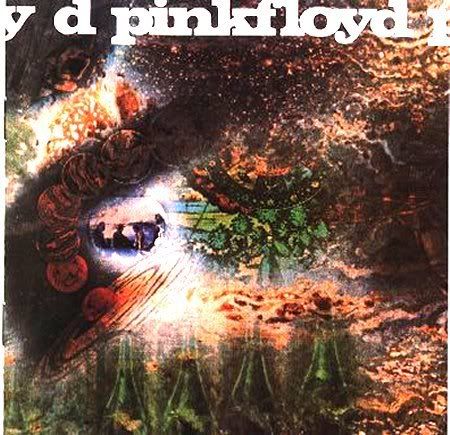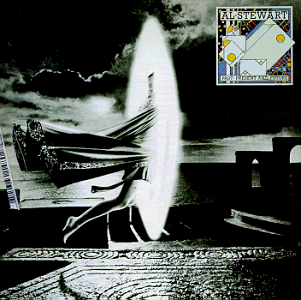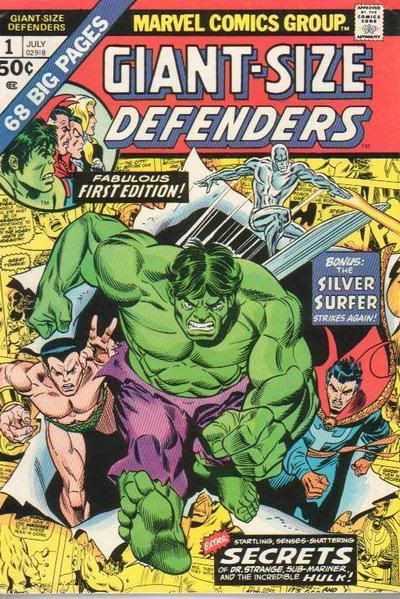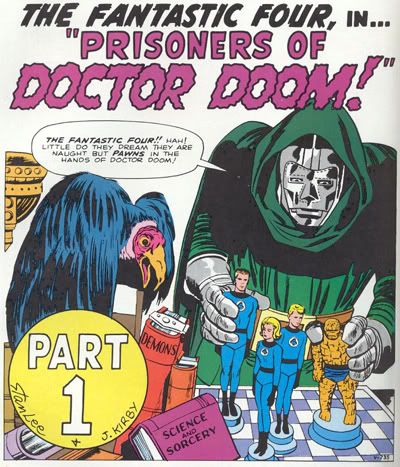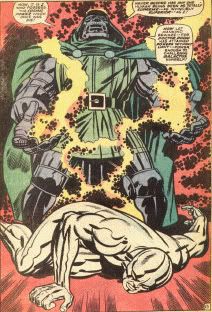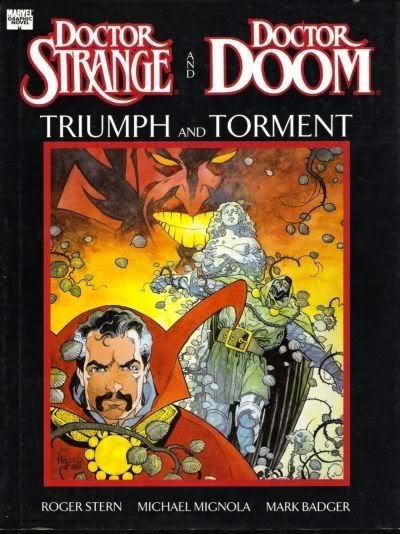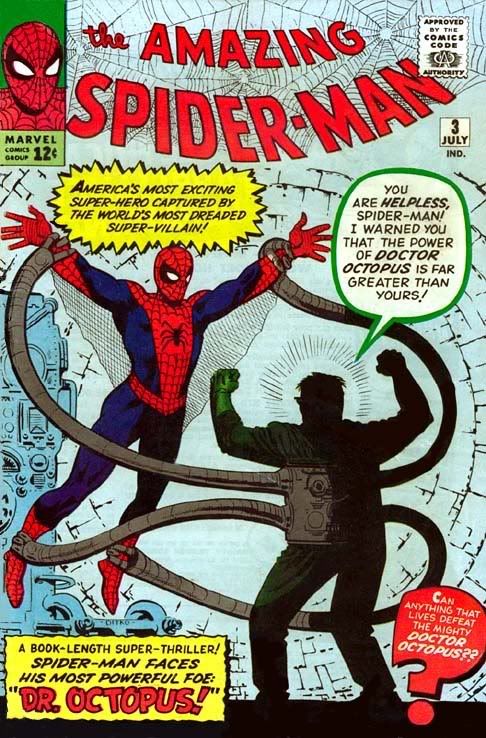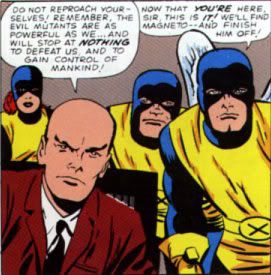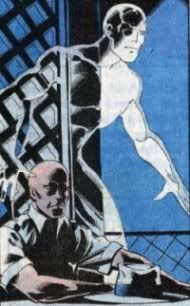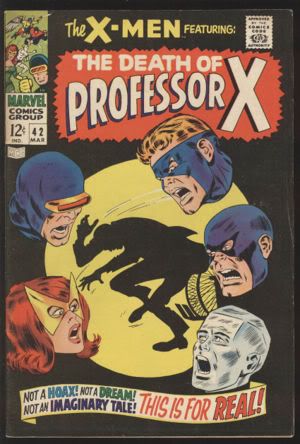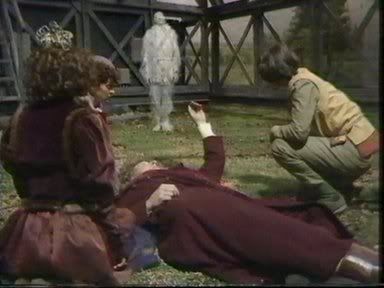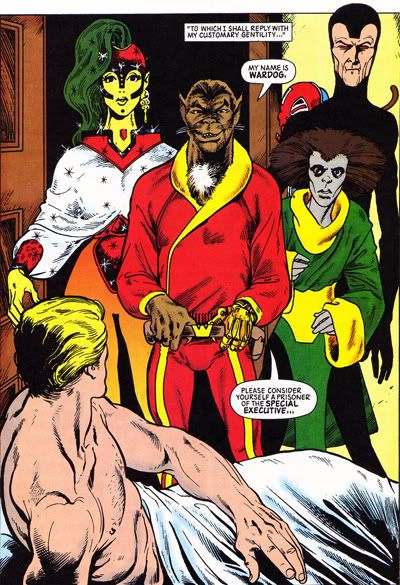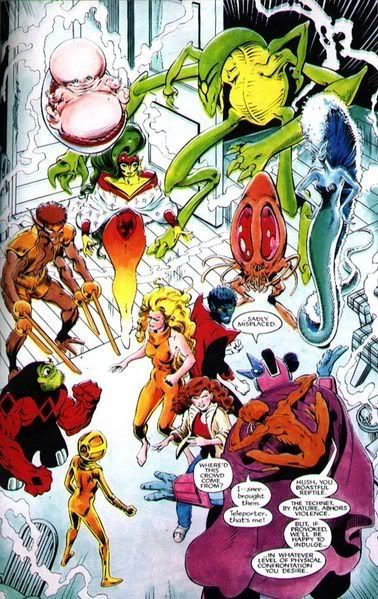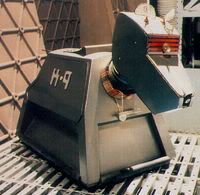
The Time Bandits: (clockwise from upper left, Strutter (Malcolm Dixon), Vermin (Tiny Ross), Wally (Jack Purvis), Randall (David Rappaport), Fidgit (Kenny Baker), Og (Mike Edmonds)
Is this not a great image from the 1981 Terry Gilliam classic "Time Bandits"? They could fit right in with the Bacchus worshipers of Velázquez's "Los Borrachos". As far as I'm concerned the subject matter of both images is exactly the same. Note how in this shot, a scene that becomes a central plot point, we have a bottle of wine, certainly Dionysian, along with four golden grails. The relationship between Gilliam and the Grail is as pronounced as any contemporary figure in the arts. He also directed "Monty Python and the Holy Grail" and "The Fisher King". All of the Gilliam films are highly significant, esoteric playgrounds. Gilliam wrote "Time Bandits" with fellow Python member Michael Palin who also has a recurring cameo role.
I once heard about a "Twilight Zone" episode with an unusual subject, even for that program. It was about a kind of gnome that existed outside of the normal stream of time who created moment by moment reality by painting in every detail with magic paintbrushes. Thus when something inexplicably went missing, like car keys or a single sock, it was due to an error on the part of one of the "time gnomes". I'm rather taken with this concept, and at this point make casual reference to the "time gnomes" when something goes missing, despite the fact that I didn't personally see the episode. But it really isn't a "Twilight Zone" episode as far as I can tell. I've searched. It doesn't seem to have been on "The Outer Limits" or "Night Gallery" either. So I don't know what program the individual who told me this story saw. Maybe it was a childhood dream, or a garbled memory of something else, perhaps "Time Bandits" itself. Or maybe some "time gnome" forgot to paint it into the present and never got around to correcting the error. Maybe these gnomes even have erasers or an "Undo" command.
But maybe it really was "Time Bandits". The plot lines are actually pretty similar. If you have never seen "Time Bandits" then look for it. If you haven't seen "Time Bandits" and are the type who wants no foreknowledge whatsoever of a film you may watch, then you should probably stop reading this as I am a horrible spoiler. "Time Bandits", however, is one of those movies that benefits from multiple viewings and a little foreknowledge can't hurt. This despite the fact that it is usually billed as a "children's fantasy" and a "comedy". It is those things for certain, but much more. It is one of my favorite movies.
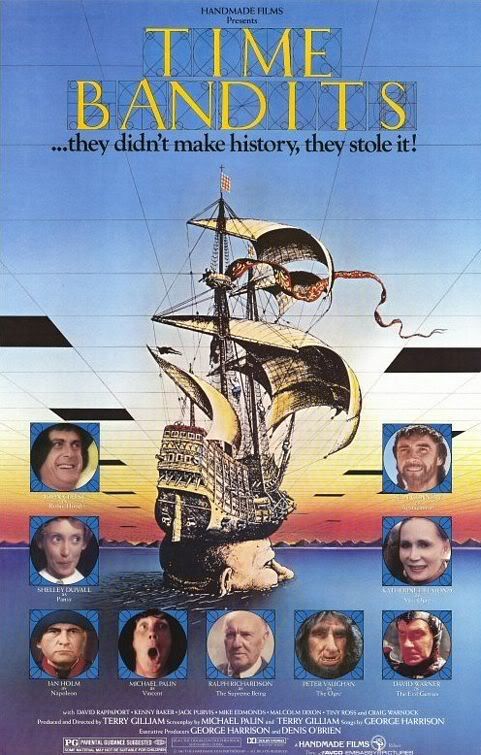
From the poster on this production is steeped in intriguing, esoteric details. The poster is of course primarily an illustration by Monty Python animator turned master surrealistic filmmaker Terry Gilliam. Note the sacred geometry elements of this image which extend throughout the film. I find it very apt that the initiatory grid-pattern is here extended across the sky, affirming the symbolic item's association with astronomy. Note also how the grid, in Templar red on white, is subtly repeated on the flag of the ship/hat. Note also the geometric designs behind each of the letters in the title, most of which are Xs. The X is major league of course, the Greek Chi, the St. Andrew's Cross, the unknown, multiplication, Christ, the sun. Importantly, the X is the essential Yonic and Phallic forms meeting, Nut and Geb. Encircled it makes a tidy icon of a stargate. I like that the Xs in the title are all hidden, behind the exoteric letters. Interesting that there are eight of them.
The X also denotes the essential pattern of the Tetramorph. While all of these levels of symbolism come into play in the use of the symbol for the X-Men, it is the Tetramorph format that I find most pertinent (see The Great Marvel Mysteries Part Two). Note in the poster above how the featured players of the film are each displayed in a simple Tetramorph. Further, the black holes in the sky grid suggest the checkerboard pattern, and in this case literally represent stargates, holes in time/space. Notice that there are eleven holes in the sky, and nine performer Tetramorphs on the poster. The cover for the Special Edition DVD is equally intriguing, as one of the stargates is used to truncate a mountain-like tower, Evil's "Fortress of Ultimate Darkness".
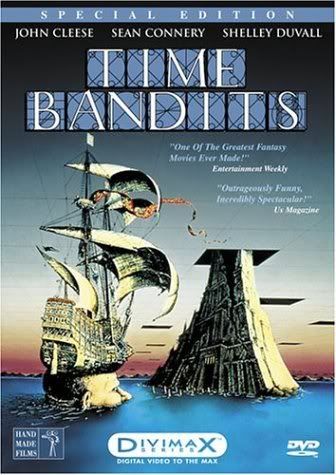

The geometric imagery continues and repeats in the opening title sequence. And we see that in this case the grid pattern is used due to the important "Map of the Universe". This is such an evocative concept, so seemingly simple and mind-boggling incomprehensible at the same time. And so profound as a metaphysical symbol. Here is the best available image I can find of the Time Bandit's Map:
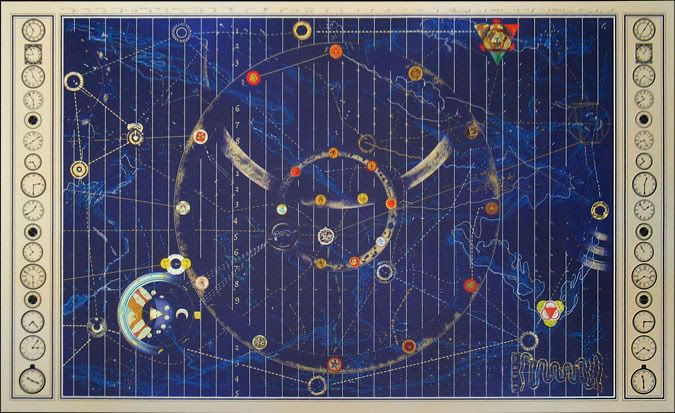
Art by Jon Heilman
This is an amazing reproduction of the Map that I found here, recreated by Jon Heilman. Take some time with it, it is a tremendous gift to see the Map so directly even at this small scale. If you note the image at the start of the article, the Map used in the film is slightly different, lacking the second column of clocks along the right hand side. The Map at the close of the film that we see rolled up, presumably by the hands of God, does have this symmetry. There are sixteen clocks in each column, thirty-two altogether, Note the Kundalini/Kabalistic Enlightenment Path Serpent twining down a column, hourglass or even Mill form (and X again). There are naturally enough twelve mandalas in the outer central ring, surrounding nine in the middle ring, with one perhaps telescoped out for closer viewing of its lunar, and to my eye, Egyptian resurrection symbolism.
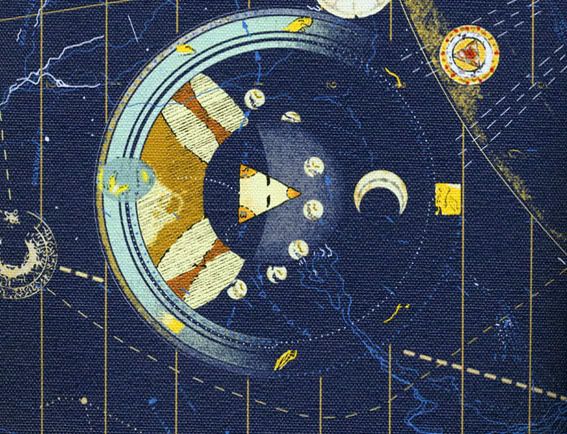
In the center are three more, two of which are situated on the ethereal curve of a mostly missing second, superimposed ring. Twelve zodiacal constellations, nine planets, and the all-important Trinity. Truly the image speaks for itself, and I'd love to hear what others get out of it. I'll just further note the form far right, three Saturnian rings around a golden circle, which makes me think of the legendary island Ogygia.
I believe this is a very subtle clue regarding the movie's significant locale the "Time of Legends". Ogygia is the island in Homer's "Odyssey" where Calypso imprisoned Odysseus for Seven years. This point becomes pertinent later in the article. Ogygia was also the island where Saturn was imprisoned sleeping after being usurped by Zeus. Saturn was the ruler of the Golden Age, which can easily be conceived of as the Time of Legends. The sickle shaped number Seven always refers to Saturn, the outermost, highest and thus overruling, of the Seven visible planets of geocentric astronomy.
"Time Bandits" tells the story of an eleven year old English boy named Kevin. He lives in a highly mundane and inane suburban reality with parents addicted to ridiculous, humiliating game shows and obsessed with new appliances. Kevin on the other hand loves history, fantasy and adventure. Kevin's world is turned upside down when six outlandishly garbed dwarfs emerge from his wardrobe. Shortly after arriving the dwarfs, and Kevin, are forced to flee through another portal as they are pursued by the giant, illuminated face of God, who wants them to give back the Map. God, as He is presented at this moment of the film, is rather like the illusionary false face of the Great and Powerful Oz , a resonance that continues when He returns at the end, but in the form of an elderly, British bureaucrat.
The Time Bandits, it turns out, were employees of God who assisted the Supreme Being in the act of creating all Space and Time. Like Santa's Little Helpers. Far from being top-tier members of the team, the Bandits were primarily in charge of generating shrubs and other items of flora. They were also charged with repairing flaws in the fabric of Space/Time (imperfectly made as it was a six day rush job), which they were to locate using the Map of the Universe. These flaws manifest as portals between incongruous points throughout Time and Space. After a labor dispute with God the Time Bandits decide to go rogue, stealing the Map in order to become wealthy by pilfering history. Reading the Map allows one to locate the time and place portals will open and to a limited degree determine where they lead to.
Naturally many have noted the similarity between the Time Bandits and Snow White's Seven Dwarfs. Kevin is frequently cited as the Seventh Dwarf, but this is not really very accurate (he is neither a Dwarf nor a Time Bandit proper) and unnecessary. Kevin is much more the Snow White. There was a seventh Time Bandit who is referred to as having died prior to the start of the film. His name was Horseflesh. Apparently the original script featured a living Horseflesh, but he was removed (through his death) to avoid potential legal problems with Disney. His role is even credited to an actor in the end credits despite the character not appearing in the film. I encountered, but can not certify, that Horseflesh is also the name of one of Evil's servants, suggesting that the dead sinner (a thief) resides in Hell with the Satanic/Saturnian Evil, trapped in his Fortress.
I prefer the secret allusion to the Seven Dwarfs anyway, and find the comparison to God's helpers in creation to be highly astronomical, the seven visible planets, as the fairy tale surely also relates to. It's my opinion that the story of Snow White and the Seven Dwarfs is a planetary extrapolation to the Norse myth of Freya (Venus) who once sought shelter from the snow at the home of four dwarfs, named North, South, East and West. The price for boarding was that she have intercourse with all four in turns. She initially refused until she spied a beautiful golden necklace (a circular or elliptical shape) the Dwarfs had crafted. For this prize she agreed to the Dwarfs' terms. The astronomical connotations of this legend are clear. I'm further reminded of Tolkien's "The Hobbit" with its thirteen dwarves (rather King Thorin Oakenshield and his twelve retainers), upping the astronomical association of dwarfs to the zodical level. Wikipeida suggest a further reason for the six dwarfs, as a subtle commentary/tribute to the six members of Monty Python.
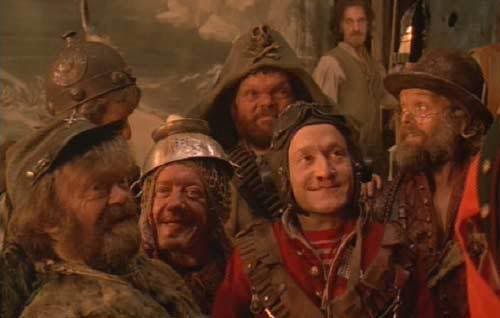
Note the excellent costuming of the time-hopping Bandits, especially their headgear. The leader, Randall (David Rappaport, who was hilarious as a malicious demon in an episode of "The Young Ones") wears the aviation cap of a pilot, a highly appropriate symbol for a chief initiator. Wally's (Jack Purvis) piratical hat features the Templar Skull and Bones/Jolly Roger, while Og's (Mike Edmonds) Viking helmet features a single Taurian Bull horn. Fidget (Kenny Baker, portrayer of the lunar R2-D2, and sharer of my birthday) has an inverted strainer with a Illumination signifying candle mounted on it, as one sometimes sees in depictions of subterranean mining kobolds, gnomes, dwarfs, etc.
The shot above is a scene of the Time Bandits being introduced to Napolean, played by Ian Holm, who is notably the portrayer of Bilbo Baggins in "The Lord of the Rings" film trilogy. The Bandits next encounter John Cleese in a hilarious presentation of Robin Hood and his Merry Men. After being chased by the big head of God again, Kevin is separated from the Bandits and finds himself in ancient Greece during a battle between a warrior and a (Taurian) Minotaur.
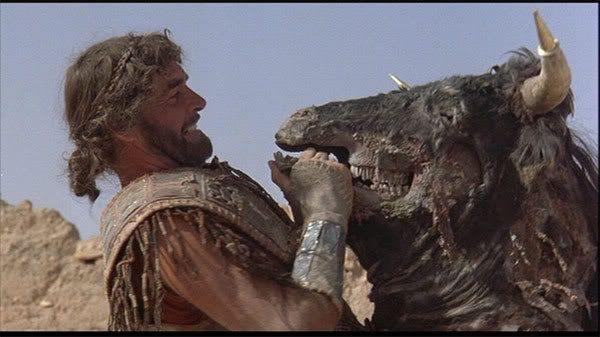
The warrior is revealed to be none other than King Agamemnon, portrayed by the highly symbolically charged Sean Connery. Kevin returns with Agamemnon to his palace. Here we see the king demonstrating sleight-of-hand using three Grail forms before the initiatory checkerboard pattern.
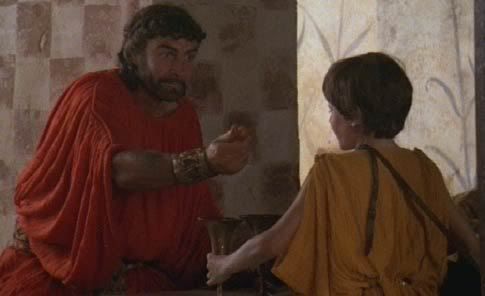
Kevin is very pleased to find himself living as the adopted son of the King in ancient Greece, but it is short lived as the Bandits locate and "rescue" him. They wind up next on the Titanic. Kevin is despondent over being removed from what he considered Utopia. Randall informs him that he has been studying the Map and believes he has found a way to enter the "Time of Legends" where the Bandits hope to locate "The Most Fabulous Object in the Universe" (an idea implanted in the thieves by the living embodiment of Evil who is luring the Bandits to his Fortress in the Time of Legends so he can steal the Map, escape his prison and rewrite the Universe based on his own design).
Invariably, the Time Bandits go down with the sinking ship and find themselves stranded in the frigid, open ocean. But they escape by entering a portal to the Time of Legends. With this passage Up becomes Down and they enter into the Other World. To demonstrate the opposite nature of the reality they enter, the black tuxedos the Bandits were wearing on the Titanic become white.
This leads me to one of the factors that compelled me to deal with "Time Bandits" now. I recently saw Disney's "Pirates of the Caribbean: At World's End". Again, spoiler alert. At the end of "Pirates of the Caribbean: Dead Man's Chest", the highly Dionysian Captain Jack Sparrow, played by Johnny Depp, was killed when he was swallowed by Davy Jones' Kraken. In "At World's End" Elizabeth Swann (played by Kiera Knightly, note the Language of the Birds resonance in these two principle characters of the franchise), William Turner (Orlando Bloom) and the resurrection figure Captain Hector Barbossa (Geoffrey Rush) embark on a quest to "World's End" in order to retrieve Sparrow and the Black Pearl from the nautical Land of the Dead, Davy Jones' Locker. With them on this journey is a Caribbean witch, Tia Dalma (Naomie Harris) who is actually Calypso, the Goddess of the Sea. It's noteworthy that to reach World's End the crew utilizes a stolen, encoded Map. Once Sparrow and the Pearl have been found they face the equally daunting challenge of returning to the Land of the Living. Sparrow deciphers on the Map that to change Worlds, Up must become Down. They purposefully capsize the ship, causing the horizon to turn 180 degrees, near exactly the means used by the Time Bandits to enter the Time of Legends.
This is all highly intriguing. The entire "Pirates" trilogy resonates details of "The Iliad" and "The Odyssey" quite explicitly. Barbossa's first name is Hector. Central to the plot is the relationship between the witch/goddess Calypso and Davy Jones. Jones is bound to the Flying Dutchman, a ship crewed by the damned souls of mariners lost at sea. This is strikingly similar to the figure of Evil in "Time Bandits" who is bound in the Fortress of Ultimate Darkness where he seems to reside with the damned souls of the dead if my inkling about the Horseflesh character is correct. This then identifies Davy Jones' Locker as another version of Ogygia where Saturn was bound.
After some surreal comedic encounters the Bandits find themselves wandering a Wasteland in search of their prize. Their constant bickering erupts into full fledged violent conflict over group leadership, which prompts Randall to throw a bone (a possible allusion to "Dawn of Man" sequence of "2001"). The bone shatters a glass like invisible barrier that was hiding the Fortress of Ultimate Darkness.
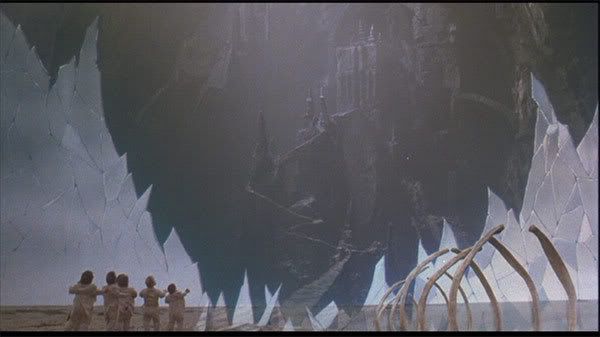
This beautiful shot is highly evocative as the object of the Bandits quest (false though it may be) is revealed to be Through the Looking Glass. Once inside Kevin and and the Bandits encounter a scenario exactly like the horrible game show Kevin's parents constantly watched. In fact they are faced with the same host of the game show and Kevin's parents. To win the prize, appliances, they must traverse an initiatory labyrinth.
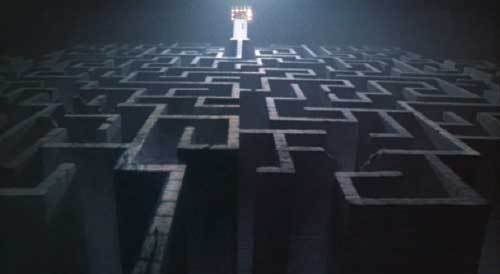
Pure-hearted Kevin immediately recognizes that something is not right, but the greedy dwarfs scramble to obtain the false prize. Making it through the maze they discover the game show host and Kevin's parents are actually Evil and two of his mutant minions. Evil takes the map and imprisons Kevin and the Bandits in a cage suspended above a bottomless pit. Without the Map all seems lost. But the image at the top of this article, a Polaroid Kevin took of the Bandits and the Map while in Sherwood Forest, proves to be their salvation. Using the photo of the Map, they locate a special portal in the Fortress allowing access to many points through time through which they may obtain assistance in retrieving the Map from Evil.
The heroes and items the Bandits recruit and obtain to confront Evil include Roman Legionnaires, Templar-like knights on horseback, cowboys from the Old West, a World War II era tank and a laser-equipped star craft from the future. Unfortunately the (highly imaginatively) shape-changing Evil is more then a match for the recruits, and actually has full control of the tank and star craft as he rules over technology and weapons of war (earlier in the film while musing over how idiotic God's reality is, Evil stated that he would have started with "laser beams, day one"). During the confrontation the Bandit Og is transformed in steps into a pig, again echoing "The Odyssey".
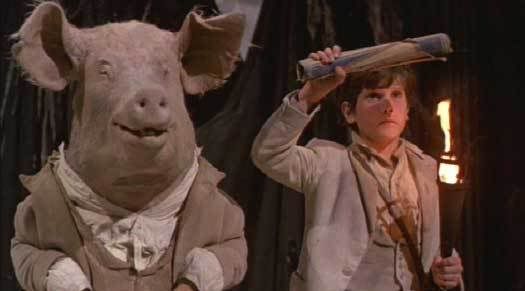
Here Kevin threatens to destroy the Map of the Universe with a torch in a moment that is clearly Promethean. Also interesting are the Ring-Wraith/Dementor like servants of Evil, black cloaked undead figures with Bull skulls for heads (a repeating detail given the decomposing state of the Minotaur fought by Agamemnon. The combination of Bull symbolism and life after death symbolism is highly Dionysian). All of Kevin and the Bandits' efforts are futile against Evil, however, until the Supreme Being arrives. He turns Evil to dark, green crystalline stone and the statue subsequently explodes.
After resurrecting Fidget (who died in the fight with Evil) and returning Og to his natural form, God reveals that He allowed the Bandits to steal his Map to begin with in order to test His Creation. He hires them back, but demoted and with a salary cut. Interesting here how the Time Bandits are punished by God for doing something He made them do to begin with. The entirely unsympathetic Supreme Being leaves with the Bandits, refusing to bring Kevin along and leaving him in the Fortress which fills with obscuring smoke.
Then Kevin awakens in his bedroom as if it were all a dream. This is of course a near omnipresent motif of Fantasy from Oz, Wonderland, Neverland, Slumberland, Unknown Kaddath, etc. It is of course the Dream Time/Under World/Other World. Kevin's room is full of smoke because the house is on fire. As firemen pull him out we see Kevin's toys arranged in a way suggesting the final confrontation with Evil was an imaginary game Kevin played (the Fortress noticeably had blocks of Lego-like design). Outside the house Kevin wonders if it was just a dream. But he still has his Polaroids from his adventure. It was a dream but the dream was real. A fireman emerges from the house with a smoking toaster oven, the source of the fire. Kevin's parents open it. Inside is a chunk of the concentrated stone Evil. Kevin warns his parents not to touch it, which merely compels them to immediately do so. His parents explode and are killed, an act that seems to concern no one present but Kevin. Left alone in the world Kevin sees that one of the firemen is the spitting image of King Agamemnon, suggesting reincarnation. He throws Kevin a wink before driving away. Note the eight-pointed star on his helmet. The reincarnation detail is also prominent in the recurring roles of Palin and Shelley Duvall who ham it up us absurdist lovers in the incongruous eras of Robin Hood and the Titanic.
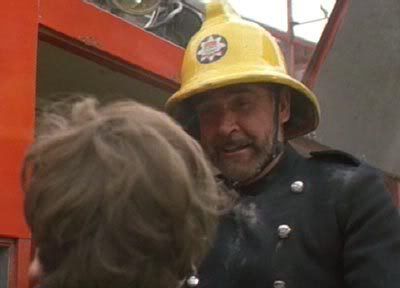
This is how this "comedy children's story" ends, with the confounding detail of the smoke emerging from the remains of Kevin's parents moving backward, as if time is reversed. The viewpoint swoops up above the English suburb, into the cosmos, and God rolls up his Map as the closing credits begin to the song "Dream Away" by George Harrison (Harrison's film company Handmade Films produced the movie). At the beginning the viewer's eye swoops into the Map, and at the end it recedes. The entire action naturally takes place within the Map itself.
Be sure to see this classic surrealistic fantasy. What I covered in this article is just the tip of the ship-sinking iceberg. Obviously I'm quite taken by the concept of a Map of the Universe. Could such an item, even on a symbolic level, actually exist? It makes me think of one of the great tragedies of art history. There is a lost masterpiece by the great early 15th century Northern Renaissance Master Jan Van Eyck. It was a Map of the World painted for Duke Philip the Good of Burgundy, for whom Van Eyck worked as an international agent and diplomat. Such a shame. Van Eyck, a true Renaissance man, is every bit as intriguing and esoteric a figure as Leonardo Da Vinci, Albrecht Durer or Hieronymous Bosch. I for one would be greatly interested to see what details this obvious occultist included in a pre-Columbus conceptualization of the "World". Damn Time Gnomes.
